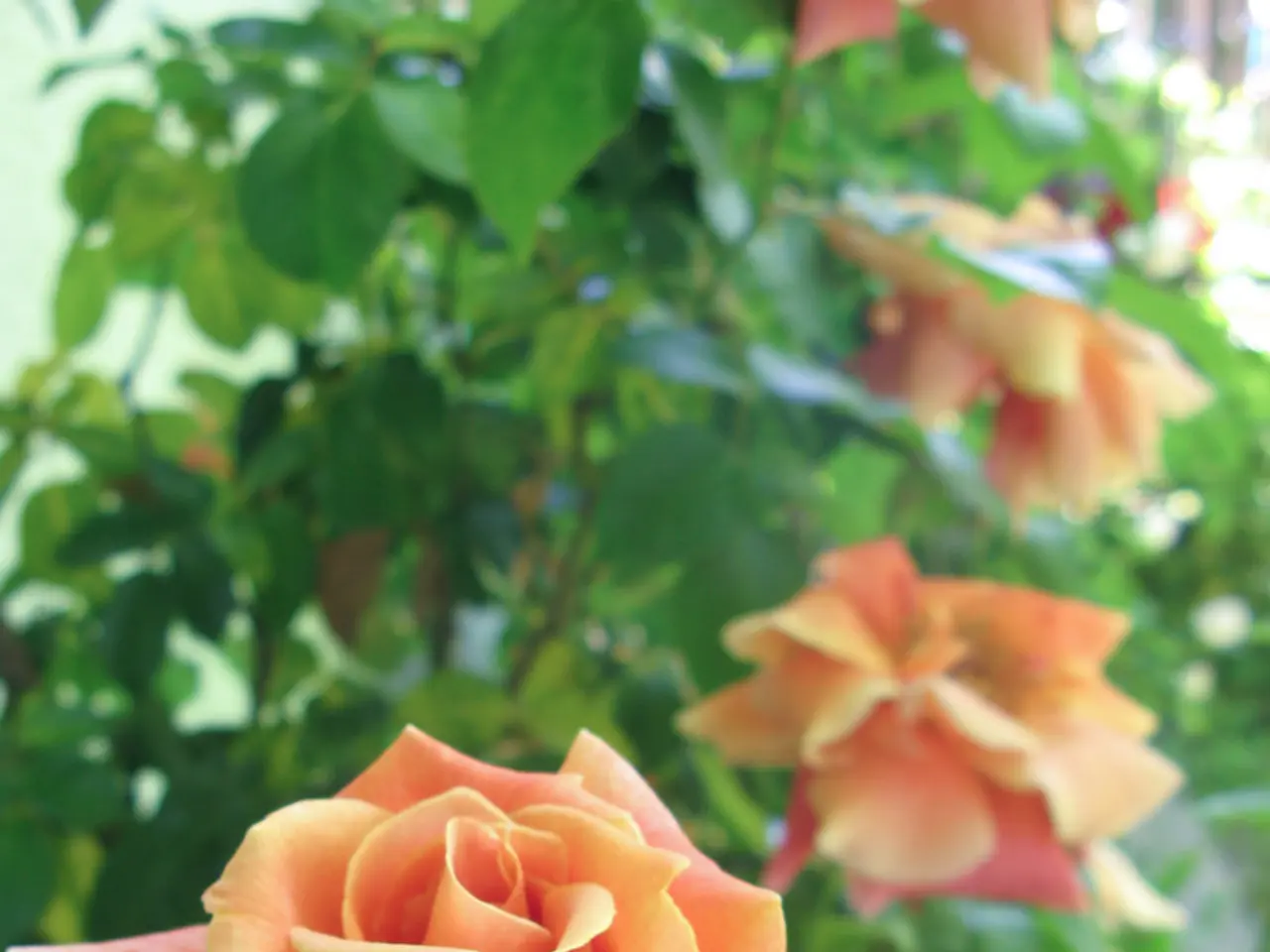Strategies for Blooming Roses: Key Insights for Achievement
In the heart of every blooming garden lies the allure of fragrant rose varieties, their captivating scents wafting through the air. To cultivate a thriving, scent-filled rose garden, consider the following care tips for proper site selection, soil management, watering, fertilizing, and pruning.
### Types of Roses and Fragrance Options
From the classic English Roses (David Austin Roses) to Hybrid Tea Roses, Floribunda, Grandiflora, and Old Garden Roses, each variety offers unique characteristics and fragrances. English Roses, such as the Wollerton Old Hall, are renowned for their strong, classic fragrances, making them an ideal choice if scent is a priority.
### Ideal Growing Conditions
Roses are sun lovers, requiring at least 6 hours of direct sunlight daily. Morning sun is particularly beneficial because it dries dew quickly and reduces disease risk. Good airflow around plants helps prevent fungal diseases, so avoid crowding roses or planting near walls that block wind. Well-drained soil is essential; roses dislike "wet feet." If you have heavy clay soil, raised beds help prevent root waterlogging.
### Planting and Soil Prep
Enrich the planting hole with garden compost or organic matter mixed thoroughly into the soil for nutrients. Mulching with organic material such as grass clippings or garden muck conserves moisture, suppresses weeds, and improves soil quality.
### Watering and Fertilizing
Water deeply but infrequently to promote deep root growth. Fertilize with a balanced rose fertilizer or organic options to support blooms and vigor, especially in spring and early summer.
### Pruning and Maintenance
Pruning in late winter or early spring to remove dead wood and shape the plant encourages strong stems and abundant flowers. For fragrant varieties, hard pruning can help maintain health and bloom quality. Regularly remove spent flowers to encourage continuous blooming. Use sprays such as organic garlic and seaweed solutions in spring to help prevent pests and diseases.
### Fragrant Rose Varieties to Consider
The Wollerton Old Hall Rose is an English rose known for its fragrance. Other David Austin roses are also popular for their scent. Old garden roses, with their natural disease resistance and strong fragrance, are another option.
By combining fragrant rose varieties with these care tips—proper site selection, soil management, watering, fertilizing, and pruning—you can create a thriving, scent-filled rose garden.
Additional Tips: - Rainwater is ideal for watering roses, and using a rain barrel to collect it makes it possible to use the water for your garden when needed. - Adding compost is a good way to prepare the soil for roses. - When selecting a rose variety for your garden, choose one that is suited to your climate and growing conditions. - Red is not the only color available for roses; they come in yellow, white, orange, and pink. - Organic remedies like neem oil can help get rid of common pests and diseases. - To propagate, take four-inch lengths of softwood stems in the spring, remove the leaves from the bottom half, dip them in rooting hormone, and plant them in potting soil. - A 1-2 inch layer of mulch is beneficial for roses as it helps keep the soil moist and cool, and suppresses weed growth.
- With the right soil management, such as enriching the planting hole with garden compost or organic matter, you can create an optimal environment for roses.
- To nourish the soil further, consider mulching with organic materials like grass clippings or garden muck, which help conserve moisture, suppress weeds, and improve soil quality.
- For a burst of color and scent in your garden, consider planting a variety of roses, such as Hybrid Tea Roses, Floribunda, Grandiflora, Old Garden Roses, or English Roses (including the Wollerton Old Hall).
- To enhance the fragrance of your rose garden, opt for varieties like the Wollerton Old Hall Rose, other David Austin roses, or Old Garden Roses, which are renowned for their strong, classic scents and natural disease resistance.
- To maintain a healthy and fragrant rose garden, practice regular pruning, removing dead wood and spent flowers, and using organic watering methods like rainwater from a rain barrel.
- For an environmentally-conscious gardening lifestyle, consider organic options for fertilizing and pest control, such as garlic and seaweed solutions, neem oil, or four-inch softwood stem propagation in the spring.
- To elevate your garden's overall aesthetic and create a harmonious fusion of nature and decor, incorporate flowers, landscaping, and even elements from fashion-and-beauty and home-and-garden design trends.




